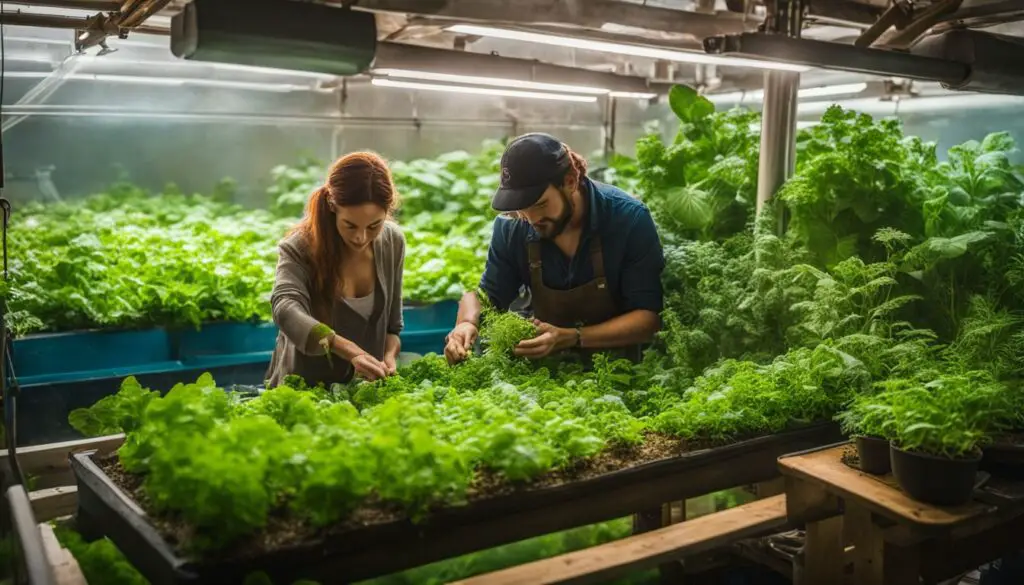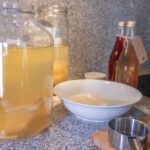If you’re exploring aquaponics, you might be wondering what plants thrive best in this innovative system. Aquaponics seamlessly combines fish farming and hydroponic gardening, creating a sustainable environment that benefits both flora and fauna.
This blog post will guide you through the best plants to grow in aquaponics setup, along with those to avoid for optimal growth. Ready to deepen your green thumb knowledge? Let’s dive right in!
Key Takeaways
- Leafy greens like lettuce, kale, and spinach are excellent choices for aquaponics because they grow fast and use fish waste as food.
- Herbs such as basil, mint, and cilantro thrive in aquaponics systems and provide fresh flavors to your dishes.
- Tomatoes, peppers, cucumbers, and strawberries are also great plants to grow in aquaponics due to their ability to thrive in the nutrient-rich water environment.
- Avoid growing blueberries, chrysanthemums, and mint in aquaponics due to their specific nutrient requirements or potential for overgrowth.
Best Plants to Grow in Aquaponics
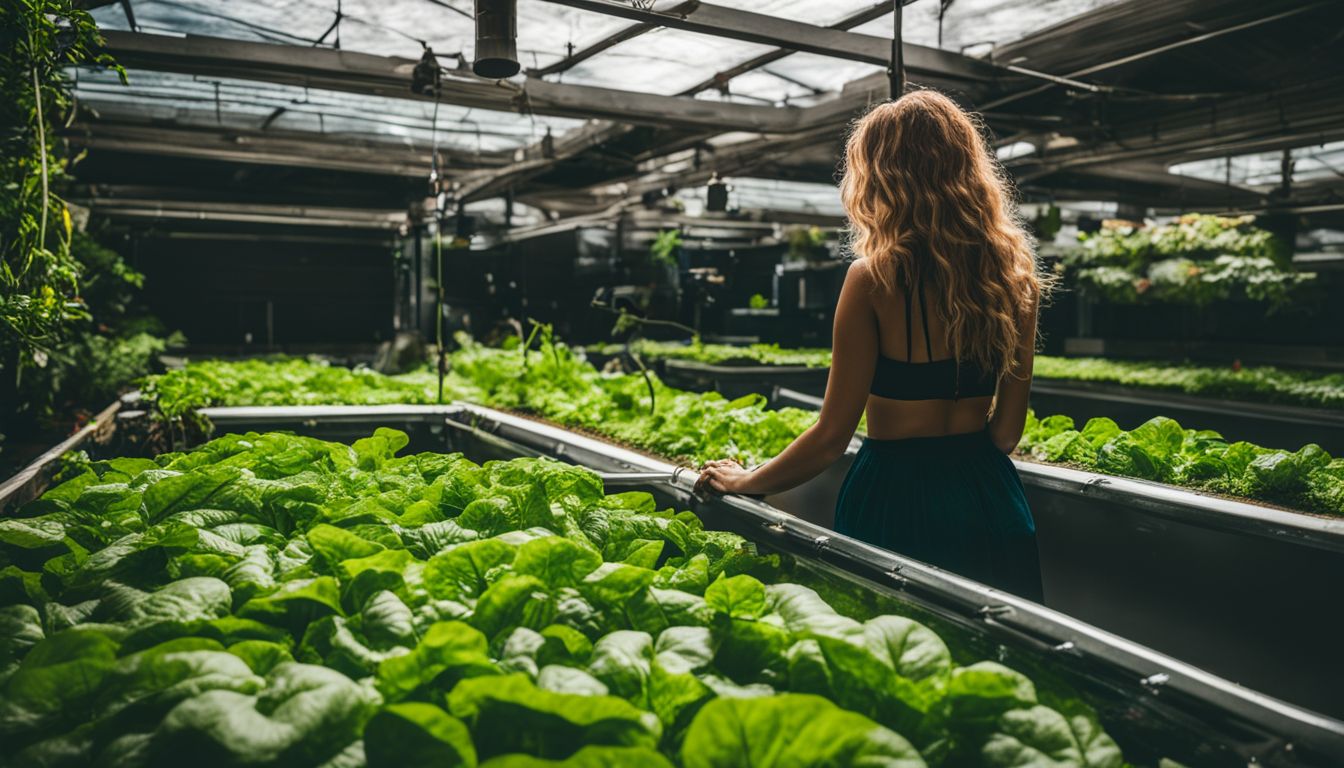
Leafy greens like lettuce, kale, and spinach are excellent choices for aquaponics due to their fast growth, high nutrient content, and ability to thrive in a soilless environment.
Leafy greens (lettuce, kale, spinach)
-839b6a920e-179062326.jpg)
Leafy greens are great for aquaponics. Lettuce, kale, and spinach do very well in this kind of system. They grow fast and use the fish waste as food. You can enjoy a fresh salad from your own garden all year long! It’s also a good way to save water because these greens don’t need much of it in an aquaponic system.
These plants make the air better too by taking out bad stuff from the water for the fish.
Herbs (basil, mint, cilantro)
-e5ee2155ab-894772106.jpg)
Basil, mint, and cilantro are great herbs to grow in aquaponics systems. These small plants grow quickly and provide a fresh aroma and flavor to your dishes. Basil is known for its sweet and fragrant leaves, which can be used in salads, pasta sauces, or pesto.
Mint is refreshing and perfect for making teas or adding flavor to desserts. Cilantro adds a zesty taste to Mexican cuisine like salsas or guacamole. Growing these herbs in aquaponics allows you to have a constant supply of fresh ingredients right at your fingertips.
Plus, they thrive in the nutrient-rich water provided by the fish waste in the system.
Tomatoes

Tomatoes are a popular choice for aquaponics because they grow well in water-based systems. They thrive in the nutrient-rich environment created by fish waste, and their vines can be trained to grow vertically, making them suitable for compact spaces.
Tomatoes also produce abundant fruit when given proper care and support. With varieties ranging from cherry tomatoes to beefsteak tomatoes, there is a tomato plant suitable for every aquaponics setup.
Whether you prefer slicing tomatoes for fresh salads or small tomatoes for snacking, growing your own tomatoes in an aquaponics system can provide you with a bountiful harvest of delicious and nutritious fruits.
Peppers

Peppers are a great choice for growing in aquaponics systems. They come in various colors and sizes, such as bell peppers, chili peppers, and jalapenos. Peppers thrive in warm environments with full sunlight, making them ideal for indoor or greenhouse aquaponics setups.
They require well-drained soil and prefer a pH level between 6.0 and 7.0. Peppers are nutrient-rich plants that benefit from the natural fertilizers provided by the fish waste in aquaponics systems.
With proper care and maintenance, you can enjoy a bountiful harvest of fresh and flavorful peppers all year round.
Cucumbers
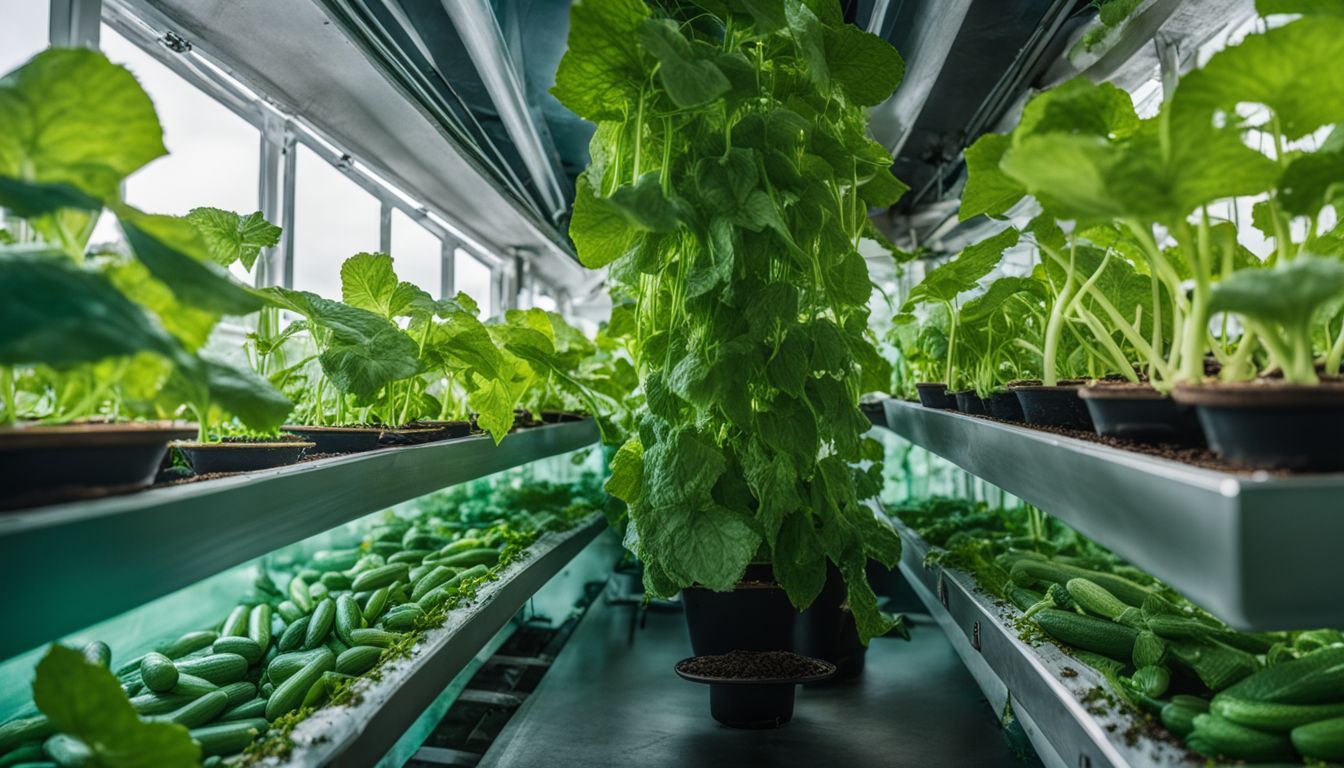
Cucumbers are one of the best plants to grow in aquaponics systems. They thrive in the nutrient-rich water and can be grown vertically to save space. Cucumbers have shallow roots, making them suitable for aquaponics setups with limited media beds.
They are also fast-growing and produce high yields, making them a popular choice among aquaponic gardeners. With proper care and monitoring of water quality, cucumbers in aquaponics systems can provide fresh and delicious harvests throughout the year.
Strawberries
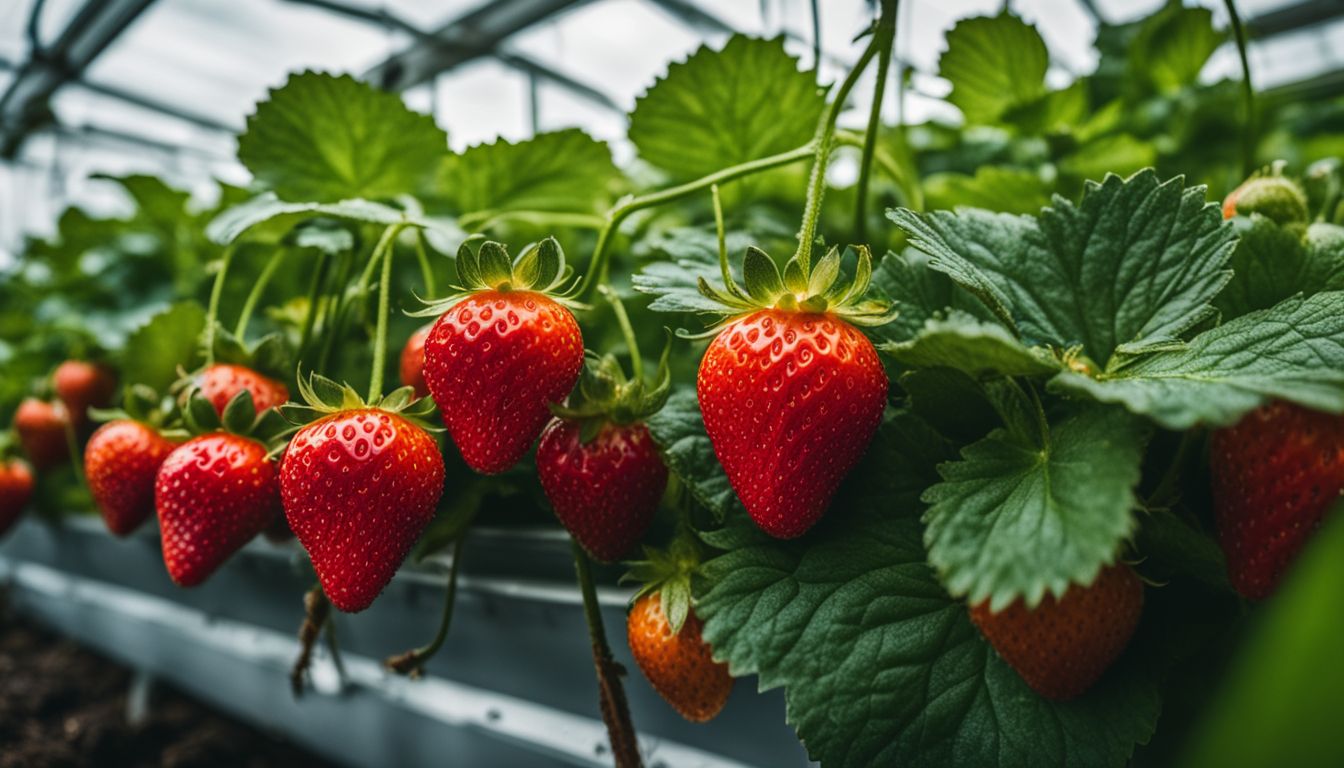
Strawberries are one of the best plants to grow in aquaponics systems. They thrive in the nutrient-rich water and can produce a bountiful harvest. Strawberries are considered a fruiting plant and add a delicious touch to any aquaponics garden.
They require ample sunlight, well-balanced pH levels, and proper spacing for optimal growth. With their sweet taste and vibrant red color, strawberries are a popular choice among aquaponics enthusiasts.
Whether you enjoy them fresh or use them in jams and desserts, growing strawberries in your aquaponics system is both rewarding and tasty.
Nutrient-Hungry Plants for Aquaponics

Some plants in aquaponics require more nutrients than others, such as watercress, Brussels sprouts, and Swiss chard.
Watercress

Watercress is a nutrient-hungry plant that thrives in aquaponics systems. It is rich in vitamins and minerals, making it a great addition to your homegrown produce. Watercress grows well in water with temperatures between 50-68°F (10-20°C) and prefers slightly alkaline conditions.
This leafy green vegetable can be harvested after just four weeks of growth, allowing for a continuous supply throughout the year. With its peppery flavor and crisp texture, watercress adds a refreshing bite to salads, sandwiches, and soups.
Plus, it helps keep your aquaponics system balanced by absorbing excess nutrients from the water. Give watercress a try in your aquaponics garden for delicious greens all year round!
Brussels sprouts
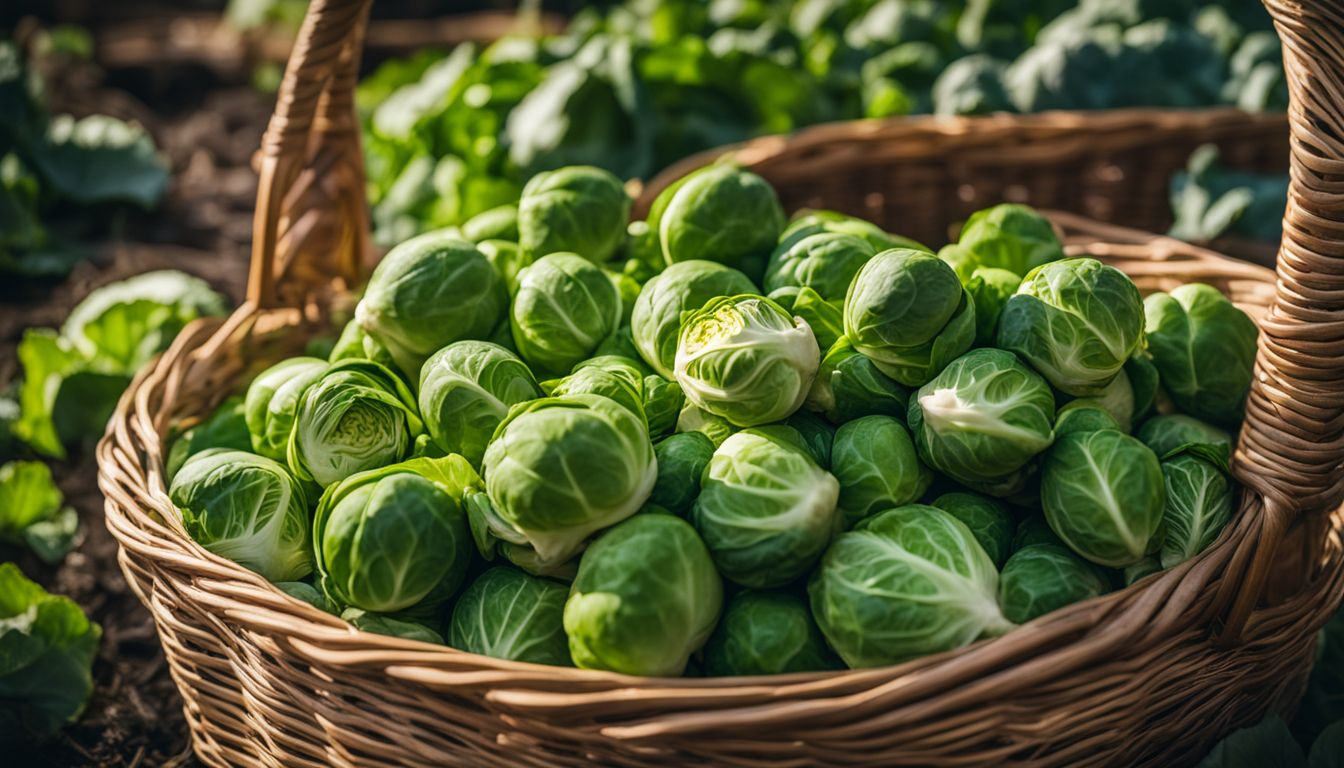
Brussels sprouts are nutrient-rich vegetables that can thrive in aquaponics systems. These small cabbage-like plants are packed with vitamins and minerals, making them a healthy addition to any diet.
They require plenty of sunlight and mild temperatures to grow successfully. Brussels sprouts also benefit from regular pruning, which encourages the growth of larger and tastier sprouts.
With their unique flavor and numerous health benefits, Brussels sprouts are an excellent choice for aquaponic growers looking to diversify their harvest.
Swiss chard
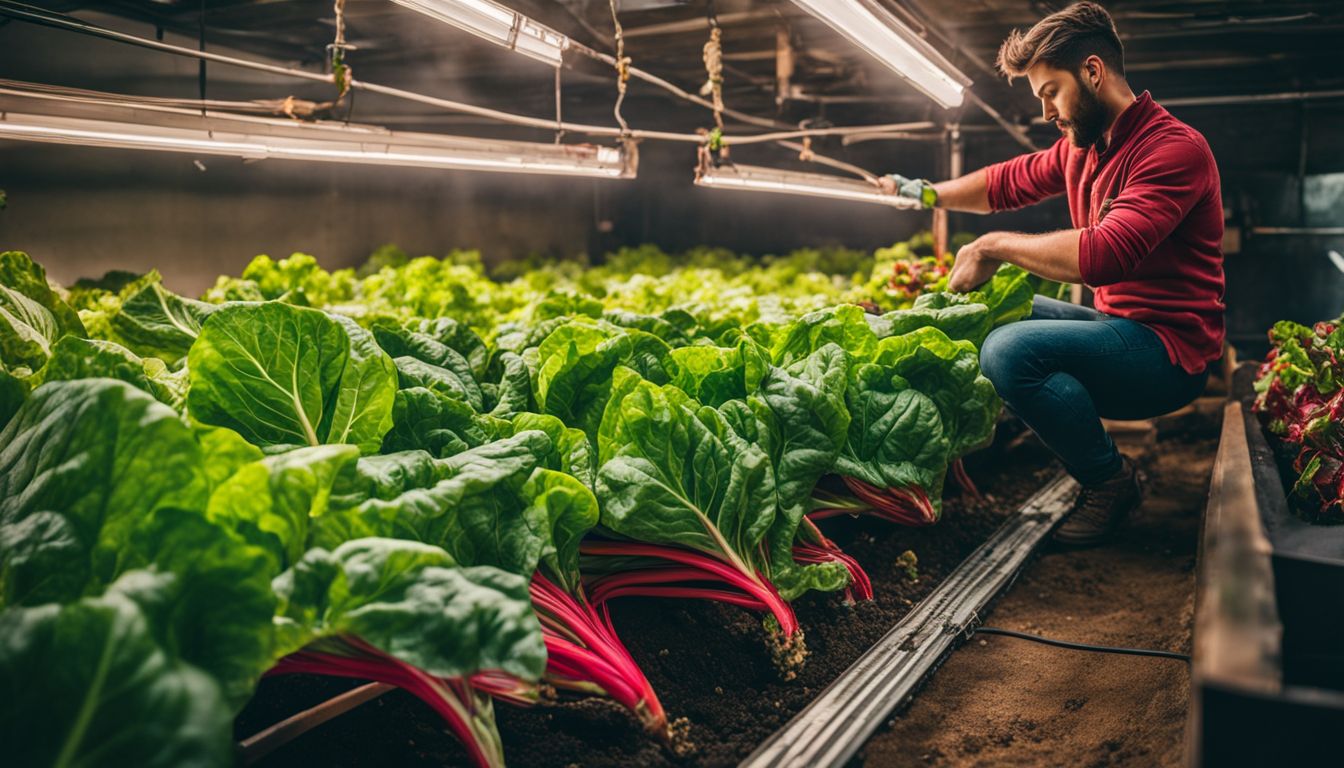
Swiss chard is a nutrient-rich leafy green that thrives in aquaponics systems. It’s packed with vitamins A, C, and K, as well as minerals like iron and magnesium. Swiss chard has beautiful rainbow-colored stems and large, tender leaves that can be harvested continuously throughout the growing season.
This versatile plant can be used in salads, stir-fries, or even juiced for a healthy boost. Plus, it grows quickly and easily in aquaponics setups, making it an ideal choice for both beginners and experienced growers alike.
Plants to Avoid in Aquaponics
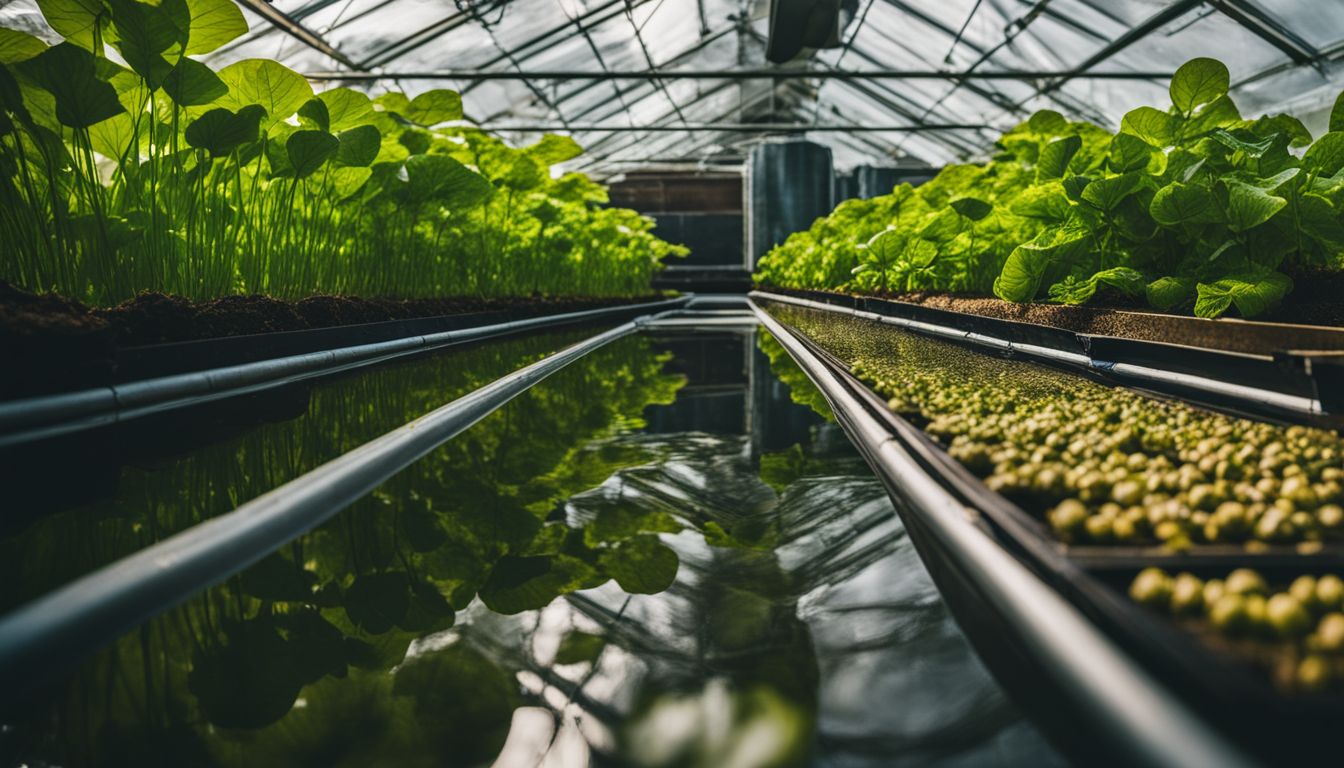
Blueberries, chrysanthemums, and mint are plants that should be avoided in aquaponics due to their specific nutrient requirements or potential for overgrowth. Curious to learn why? Keep reading!
Blueberries

Blueberries are not recommended for aquaponics systems. They have specific soil and pH requirements that may not align with the conditions in an aquaponics setup. Blueberry plants need acidic soil, which can be challenging to maintain in a system where the water is continuously recirculating.
Additionally, blueberries require a long growing season and colder temperatures during winter dormancy, making them less suitable for year-round cultivation in aquaponics. It’s best to choose other plants that are better suited for this type of farming method.
Chrysanthemums
Chrysanthemums are not recommended for aquaponics systems. While they are beautiful flowers, they require specific conditions that may not be suitable in this type of farming method.
Aquaponics systems typically provide a balanced nutrient solution for plants through the waste produced by fish. Chrysanthemums have high fertilizer requirements and prefer soil-based cultivation rather than a water-based system like aquaponics.
It’s best to choose other plants that are more compatible with the aquatic environment and nutrient levels provided by the system.
Mint
Mint is a plant that you should avoid growing in aquaponics systems. While it may be a popular herb for cooking and making tea, mint can spread quickly and take over your aquaponics setup.
It has invasive tendencies and can grow out of control, crowding out other plants in the system. Mint also requires a lot of water to thrive, which can disrupt the balance of your aquaponics system.
So, it’s best to keep mint separate from your aquaponics garden to ensure the health and productivity of other plants in the system.
Benefits of Growing Plants in Aquaponics
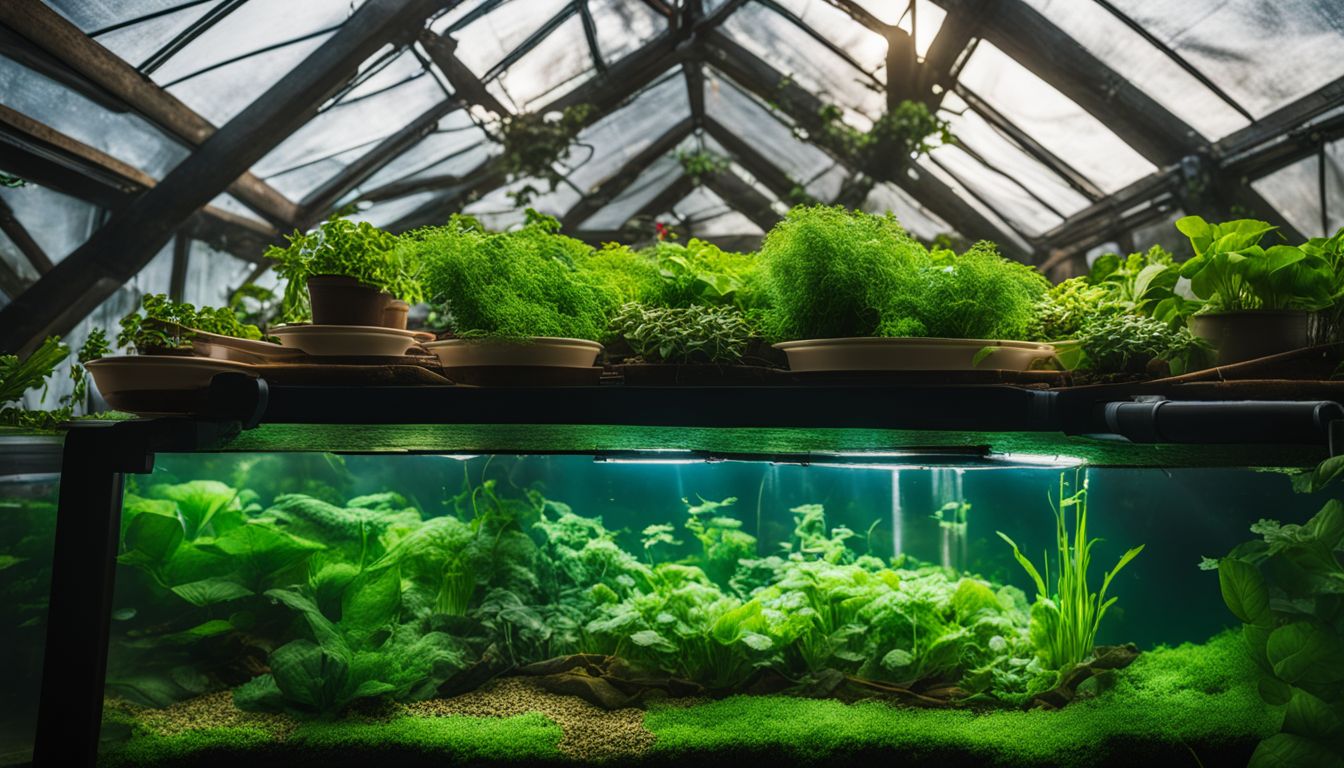
Aquaponics offers several benefits for growing plants, including efficient water and nutrient usage, year-round cultivation, and reduced reliance on pesticides and fertilizers.
Efficient use of water and nutrients
Aquaponics is known for its efficient use of water and nutrients. In this farming method, the waste produced by fish provides natural fertilizers for the plants, eliminating the need for chemical additives.
The plants then help filter the water, creating a sustainable ecosystem where both fish and plants thrive. Compared to traditional soil-based gardening, aquaponics uses about 90% less water because it recirculates and reuses the same water continuously.
This makes it an environmentally friendly choice for growing crops.while conserving precious resources like water.
Year-round cultivation
Aquaponics systems allow for year-round cultivation of plants, regardless of the season. This is because aquaponics creates an optimal environment for plant growth by maintaining consistent water temperature and nutrient levels.
With this controlled system, you can grow your favorite vegetables, leafy greens, herbs, and even flowers all year long. The symbiotic relationship between fish and plants in aquaponics ensures a continuous supply of nutrients to support plant growth, making it a sustainable and efficient method for year-round cultivation without the need for chemical fertilizers or pesticides.
Reduced need for pesticides and fertilizers
Aquaponics systems can significantly reduce the need for pesticides and fertilizers. This is because the waste produced by fish in the system supplies natural nutrients to the plants, eliminating the need for chemical fertilizers.
The plants also help filter and purify the water, creating a healthier environment for both the fish and the crops. Additionally, since aquaponics systems are typically closed-loop systems with minimal exposure to pests and diseases, there is often a reduced need for pesticides compared to traditional soil-based farming methods.
Overall, aquaponics offers a more sustainable and environmentally friendly approach to growing plants without relying heavily on synthetic chemicals.
Conclusion

In conclusion, the best plants to grow in aquaponics systems are leafy greens like lettuce and spinach, herbs such as basil and mint, tomatoes, peppers, cucumbers, and strawberries.
These plants thrive in the nutrient-rich water environment created by combining aquaculture and hydroponics. With aquaponics, you can enjoy a sustainable way of growing delicious vegetables and herbs while conserving water and reducing the need for chemical fertilizers.
Start your own aquaponics garden today!
FAQs
1. What are the best plants to grow in aquaponics?
Some of the best plants to grow in aquaponics include leafy greens like lettuce and spinach, herbs like basil and mint, vine crops like tomatoes and cucumbers, and fruits like strawberries.
2. Can I grow flowers in aquaponics?
Yes, you can also grow flowers in aquaponics. Some popular choices are marigolds, geraniums, petunias, and roses. However, it’s important to consider their nutrient requirements and compatibility with fish species.
3. Do I need special seeds for aquaponic gardening?
No, you can use regular seeds for aquaponic gardening. Just make sure they are not treated with any fungicides or pesticides that may harm the fish or bacteria in your system.
4. How long does it take for plants to grow in an aquaponics system?
The growth rate of plants in an aquaponics system varies depending on factors such as plant type and environmental conditions. Generally, you can expect faster growth compared to traditional soil-based gardening due to the nutrient-rich water provided by the fish waste.

As a dedicated mother and passionate software developer, she weaves her diverse experiences into captivating stories that inspire and engage readers. Emma's love for sustainable living and environmental consciousness permeates both her personal and professional life. When she's not immersed in the world of coding and software development, Emma can be found nurturing her family and tending to her thriving organic garden. Her commitment to sustainable practices extends to every aspect of her life, from repurposing household items to embracing eco-friendly technologies.

